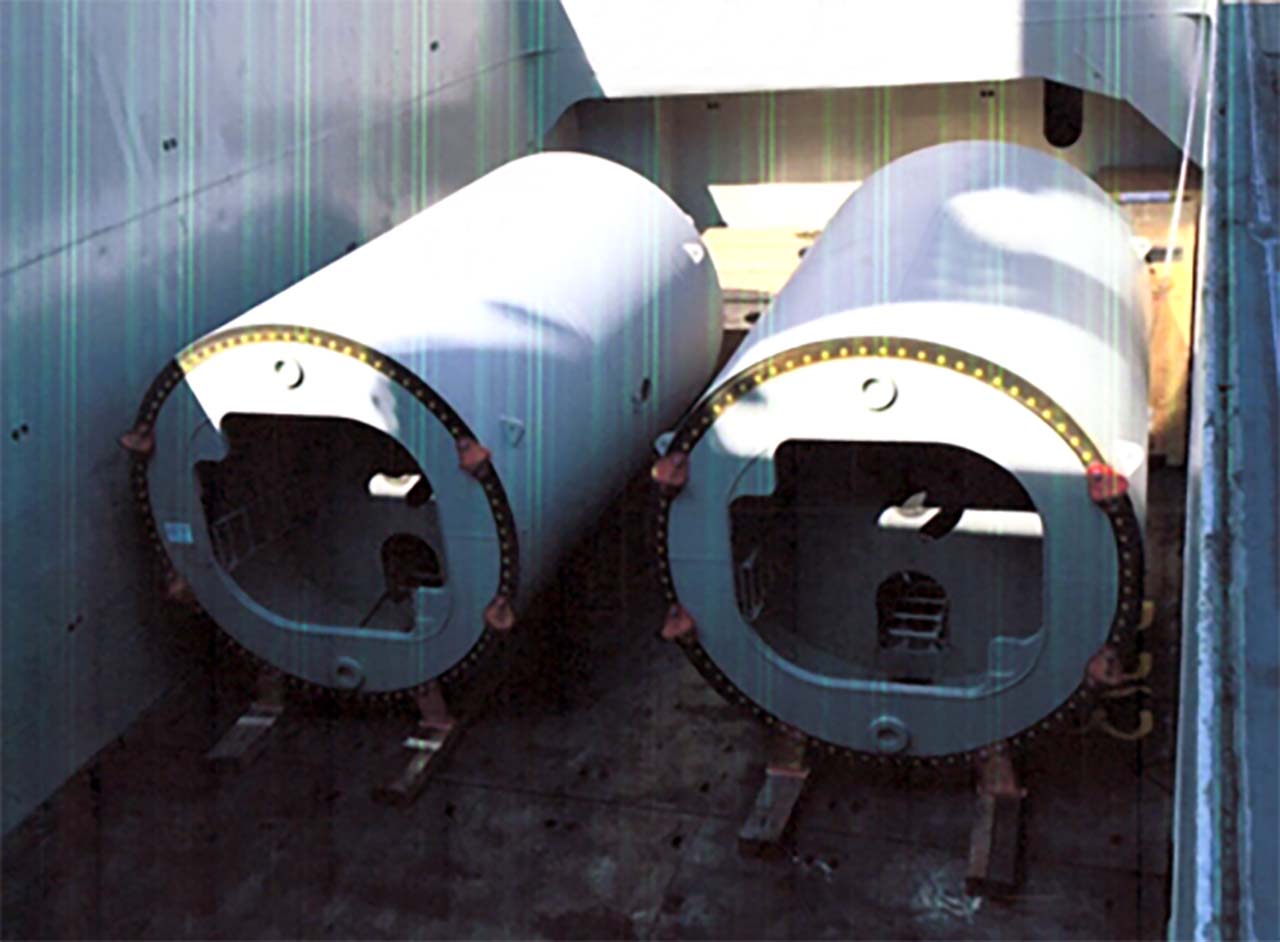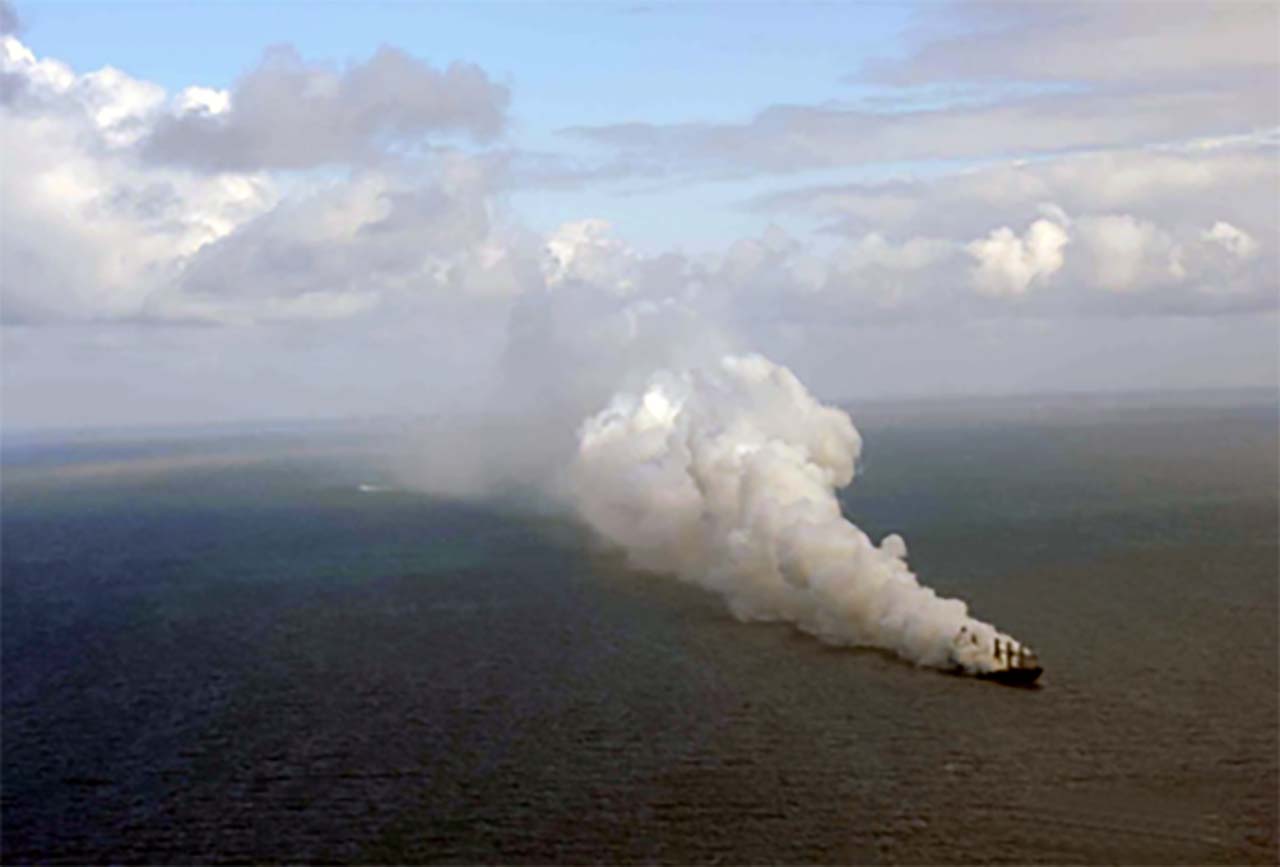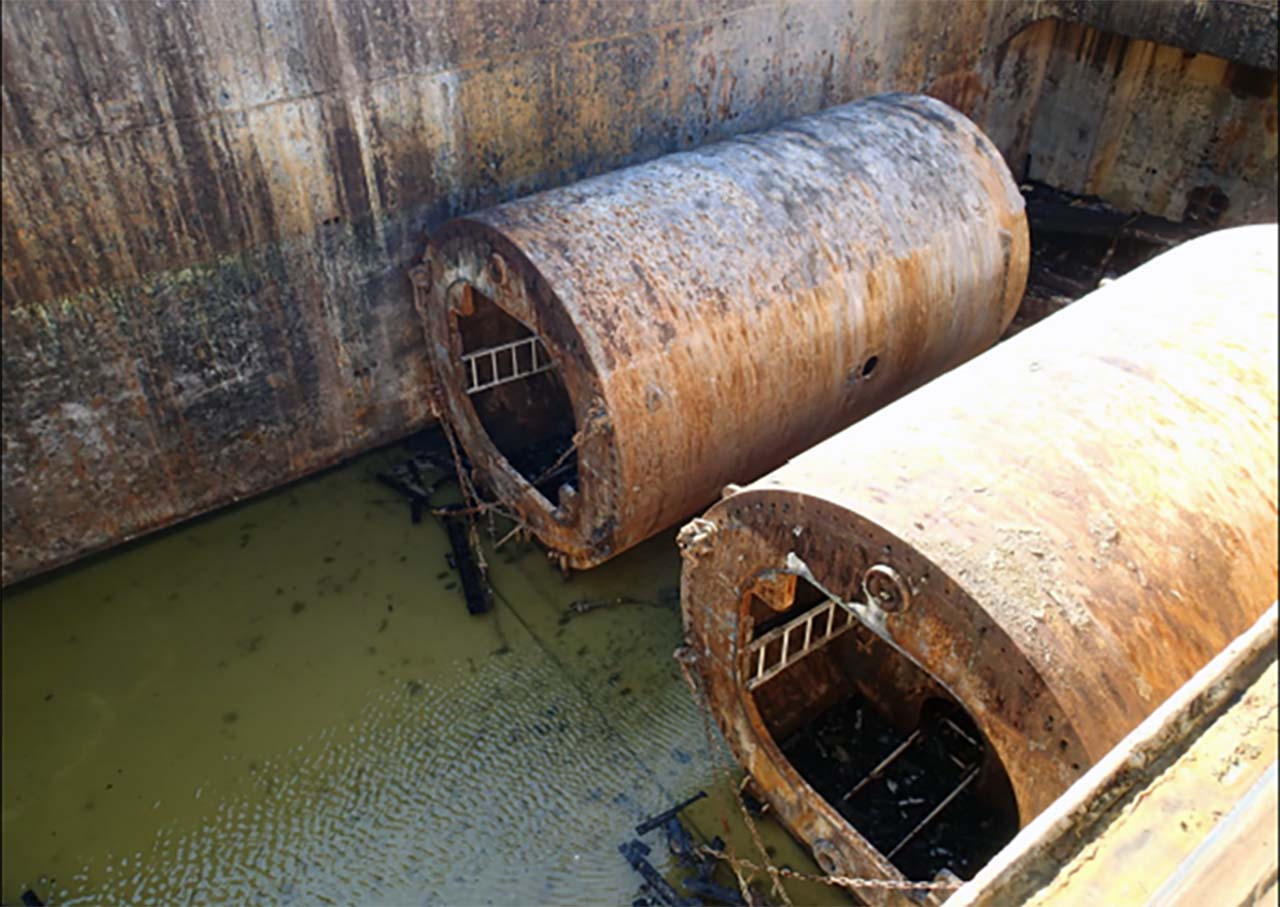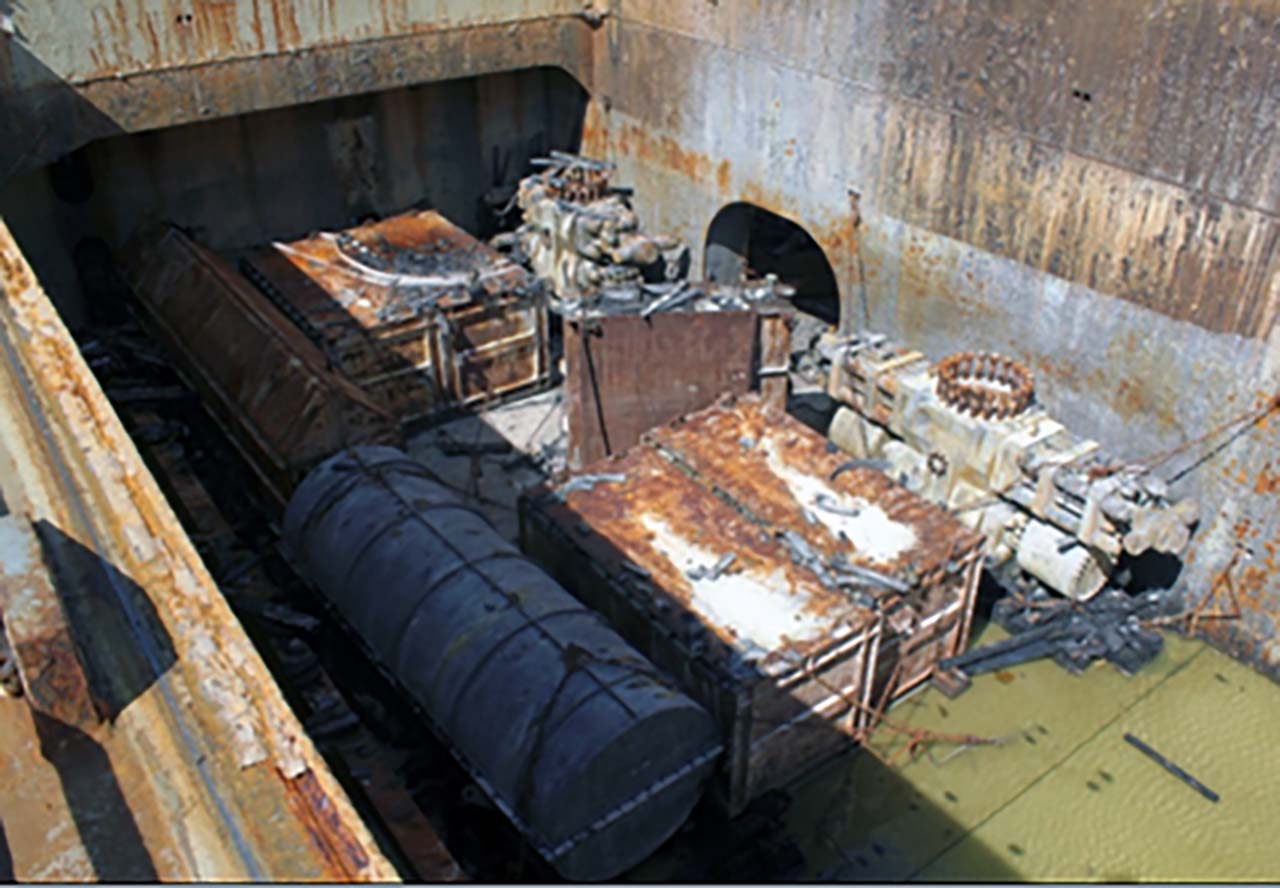A 23,401 GT multi-purpose carrier was about to anchor after leaving port carrying a cargo of various types of fertiliser in bulk as well as general cargoes when white smoke was noticed emitting from cargo hold no.3. After a failed attempt to extinguish the suspected fire using the ship’s fixed CO2 system and with the risk of an explosion due to the decomposition of the fertiliser, the ship was evacuated and later declared a total loss.
WHAT HAPPENED?
After loading a cargo consisting of various types of fertiliser in the lower holds no. 2 to 5, and various general cargoes in hold no. 1 and on the tween decks of holds no. 3 and 4 (Figure 1), the ship was proceeding to anchorage before continuing its voyage.
During the anchoring manoeuvre the master noticed from the bridge some white smoke emerging from the aft part of hold no. 3 and soon after also from the starboard side of the hold. The master notified the chief officer (C/O) who was monitoring the anchoring operation at the forecastle. The C/O sent crew members to investigate and later joined himself. Arriving at cargo hold no. 3 it was established that the white smoke was escaping from the hold’s fan cowls and that the smoke had a chemical odour and did not appear to be hot.
An able seaman (A/B) put on a fire protection suit including breathing apparatus and prepared to enter the hold. However, there was dense smoke and, as the A/B felt he could sense smoke inside his face mask, the attempt to enter the hold was aborted.
The crew identified the cargo in hold no. 3 to be ammonium nitrate based fertiliser in the lower hold and machinery parts and metals packed in wooden crates on the tween deck. After consulting the company’s designated person it was decided to release the hold’s fixed CO2 system. Immediately after all the CO2 had been released the smoke visibly reduced to a minimum. Openings on the hold’s hatch cover where smoke was still visible were sealed by the crew. They believed the situation was now stable.
The ship contacted the local shoreside authorities and the local Central Command for Maritime Emergencies (CCME) assumed overall command of the operation. A team of firefighters were dispatched to the ship by helicopter to investigate.
The firefighting team established that the ammonium nitrate based fertiliser on board was likely to be decomposing. In an attempt to halt the chemical decomposition process, it was decided to try and flood hold no. 3 by opening its hatch cover and then discharging water into it using a water canon from a firefighting ship that had arrived at the scene. Suddenly a massive outbreak of yellow smoke emerged from cargo hold no.3. This raised concerns about the potential risk of an imminent explosion on board and it was decided to evacuate the ship completely.
Over the next couple of days with the assistance of three firefighting ships hold no. 3 was successfully flooded stopping the suspected exothermal self-sustaining decomposition of the ammonium nitrate based fertiliser in the hold (Figure 2).
The damaged ship was later towed away for unloading and declared a total constructive loss (Figures 3 and 4). The incident did not result in any fatalities or serious injuries. However, as a precaution the crew and firefighting team were taken to hospital for observation after being exposed to the smoke and fumes.




Additional Information
For more information on this incident email lossprevention@tindallriley.com.
THIS CASE STUDY IS DRAWN FROM THE INVESTIGATION REPORT PUBLISHED BY THE BUNDESSTELLE FÜR SEEUNFALLUNTERSUCHUNG (BSU):
THE PURPOSE OF THIS CASE STUDY IS TO SUPPORT AND ENCOURAGE REFLECTIVE LEARNING. THE DETAILS OF THE CASE STUDY MAY BE BASED ON, BUT NOT NECESSARILY IDENTICAL TO, FACTS RELATING TO AN ACTUAL INCIDENT. ANY LESSONS LEARNED OR COMMENTS ARE NOT INTENDED TO APPORTION BLAME ON THE INDIVIDUALS OR COMPANY INVOLVED. ANY SUGGESTED PRACTICES MAY NOT NECESSARILY BE THE ONLY WAY OF ADDRESSING THE LESSONS LEARNED, AND SHOULD ALWAYS BE SUBJECT TO THE REQUIREMENTS OF ANY APPLICABLE INTERNATIONAL OR NATIONAL REGULATIONS, AS WELL AS A COMPANY’S OWN PROCEDURES AND POLICIES.

 English
English